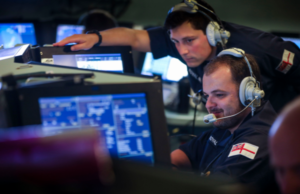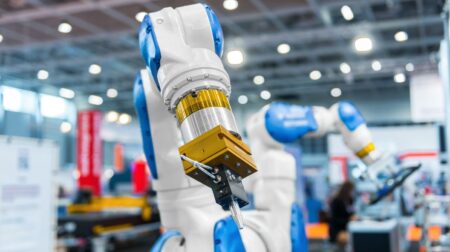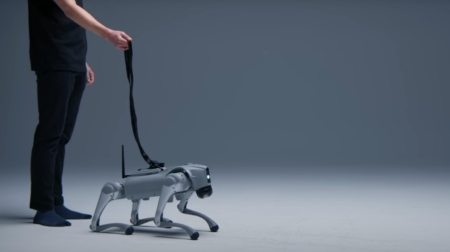The Royal Navy is using AI for the first time at sea in a project designed to defeat missile attacks.
During the largest exercise of its kind, the Navy is testing leading-edge software against live missiles at sea off the coasts of Scotland and Norway.
Involving more than 3,000 military personnel, Formidable Shield tests the ability of NATO warships to detect, track and defeat incoming missiles, from sea-skimming weapons travelling at twice the speed of sound just above the waterline, to ballistic missiles.
There are three Royal Navy warships taking part in the exercise, which runs until early June, including destroyer HMS Dragon and two frigates, Lancaster and Argyll.

According to the Navy, HMS Lancaster and Dragon are trialling AI and machine learning applications which offer a glimpse of the future of air defence at sea.
Staff from the government’s defence laboratory Dstl and industry partners from Roke, CGI and BAE Systems are using the three-week exercise to test their ‘Startle’ and ‘Sycoiea’ systems.
Alasdair Gilchrist, programme manager for Dstl said it was “imperative” that Britain continues to invest in the combat systems installed on Royal Navy warships to ensure they meet present and future challenges.
He said: “Being able to bring get the AI onto the ships is a massive achievement, and while we can prove the AI works in the labs, actually getting Navy personnel hands on is brilliant.”
Startle is designed to help ease the load on sailors monitoring the ‘air picture’ in the operations room by providing real-time recommendations and alerts.
Sycoiea builds upon this, the Navy added it is at the forefront of automated platform and force threat evaluation Weapon assignment. It allows operations room teams to identify incoming missiles and advise on the best weapon to deal with them more quickly than even the most experienced operator.
Above water tactician leading seaman Sean Brooks aboard HMS Lancaster is among those who was impressed by the software.
“I was able identify missile threats more quickly than usual and even outwit the operations room,” he said.
Although experiments with AI have been conducted before, this is the first time it’s been tested against live missiles. Lancaster’s weapon engineer officer lieutenant commander Adam Leveridge, added:“Observing Startle and Sycoiea augment the human warfighter in real time against a live supersonic missile threat was truly impressive – a glimpse into our highly-autonomous future.”








